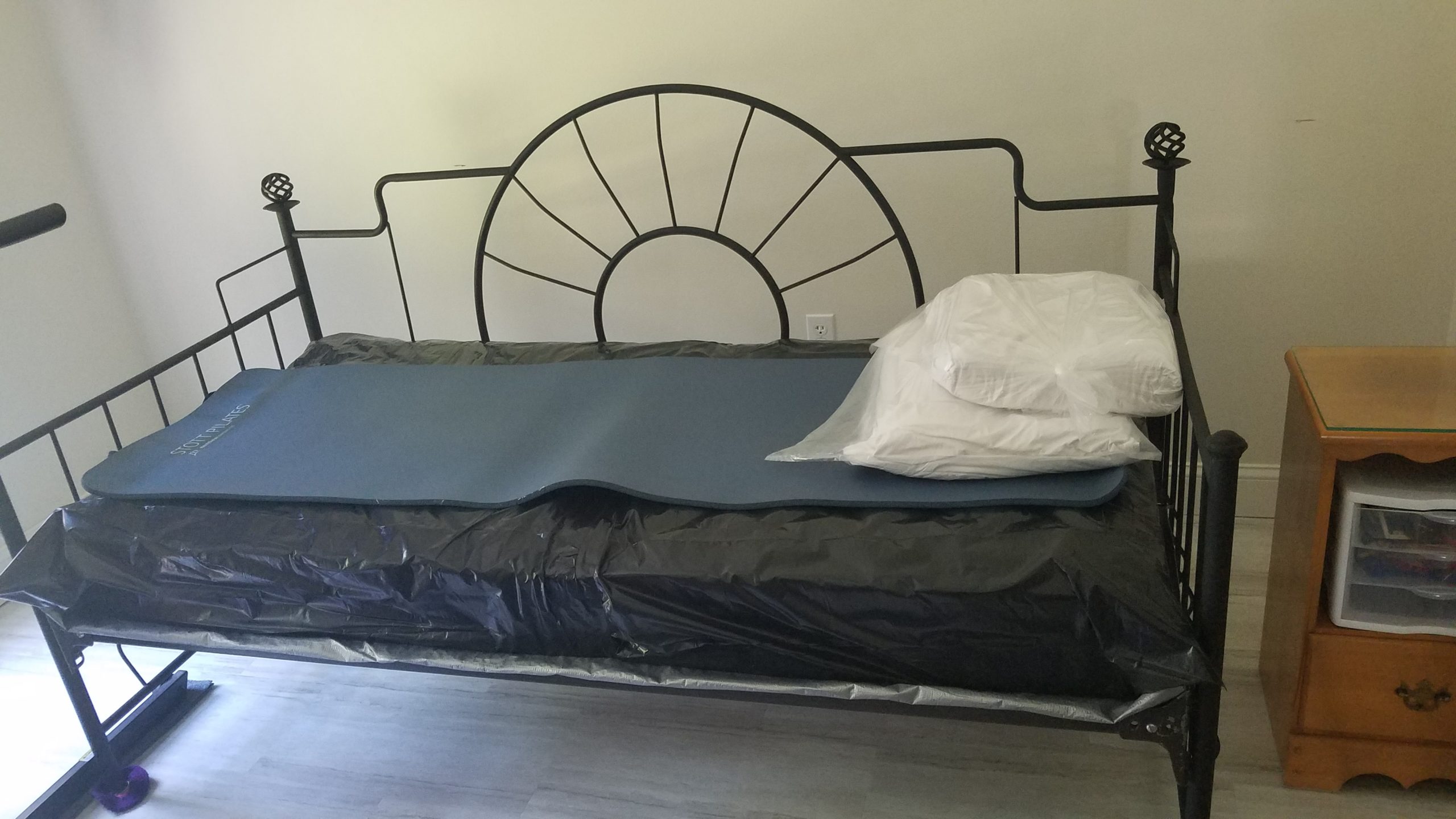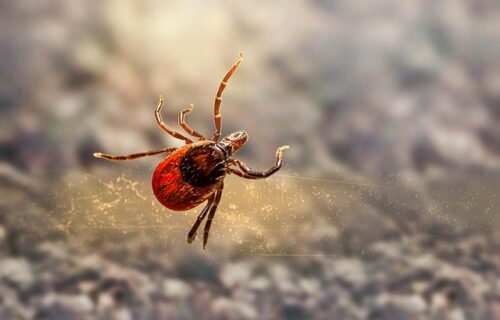
Eradicating Mites from Your Environment
Dealing with a bird mite infestation is one of the most invasive, exhausting, and isolating experiences a person can endure. It impacts your body, mind, and home—all at once. The above photo is the bed I slept on for months until I could break the infestation in our home. Here’s what I learned about reclaiming your environment.
1. Fabric Is the Enemy
Bird mites love fabric. Your goal is to eliminate or seal off as much of it as possible.
-
Cover mattresses, couches, and chairs in plastic. You can use large garbage bags or ask local mattress stores for plastic mattress covers (they’re often free).
-
Pillows: Bag them in plastic and use synthetic/polyester pillowcases.
-
Blankets: I avoided the use of a blanket all together…a top sheet is much easier to soak in baking soda/salt combo (see how to save your clothes post)
-
Spray plastic nightly with straight Windex (ammonia base helped reduce activity).
2. Handle Your Floors
-
Carpet is a major breeding ground. If you can’t remove it, cover it.
-
Use adhesive carpet protection film (from Lowe’s or Home Depot).
-
Overlap each strip and seal all edges with duct tape to block mite movement.
3. Declutter and Contain
-
Remove clutter and bag everything you can in clear plastic (so you can see contents).
-
The more minimalist your environment, the easier it is to manage and clean.
4. Pesticide Caution
-
Synthetic pesticides often make things worse: They stress mites, making them more aggressive, and are toxic to your immune system.
-
Many pesticides lack residual power. Mites hide and return once the spray settles.
-
Fogging and rotation of natural agents was key.
5. What Actually Worked
Fogging Mixture (Kills on Contact)
Use equal parts:
-
Isopropyl alcohol (70% is fine, 90% is better)
-
Witch hazel
-
3% hydrogen peroxide
Tips:
-
Use a tri-jet ULV fogger for effective room coverage. Note: If you buy a cheap fogger, it will yield ineffective results and make your work so much harder.
-
Point fogger at the ceiling on a tall ladder.
-
Fog until the room is fully clouded—every 3 days to break the life cycle.
-
Cover all electronics with tarps or garbage bags and wear protective gear (this mixture can bleach hair!).
Spinosad Spray (Residual Killer)
-
Spray on baseboards and about 1 foot up the wall after fogging dries.
-
Causes mites to convulse and die after contact.
-
Needs reapplication every 3 days—residual effects were limited in my experience.
6. Product Rotation Is Essential
Mites adapt quickly, so rotating treatments is essential. Using just the alcohol-based fog alone wasn’t enough—I couldn’t break the cycle. I also tried spinosad on its own, but the results were equally disappointing. It wasn’t until I began alternating between the alcohol combo and spinosad that I finally turned the tide. That rotation strategy was the nail in the coffin for the infestation.
Other products people have used:
-
Cimexa (dust): Good for electrical outlets/cracks but not effective on its own.
-
Apprehend (Beauveria bassiana): Natural fungus-based biopesticide Expensive and needs a special sprayer.
-
Onslaught + NyGuard: Synthetic combo that reduced mite size but didn’t eliminate them. Had no effect on our infestation.
7. Final Notes
-
Breaking the infestation took 5 weeks of consistent effort, with repeated rotation of products.
-
Fog every 3 days, spray Spinosad after area dries from fogging, and keep everything sealed.
-
Be cautious—many products are off-label and can harm your health.
-
Today’s bird mites have evolved into “super mites,” hardened by repeated spraying of synthetic pesticides in industrial farming. Over time, they’ve built up a strong tolerance—making them incredibly resilient. But with the right strategy, they can be defeated.




Add A Comment